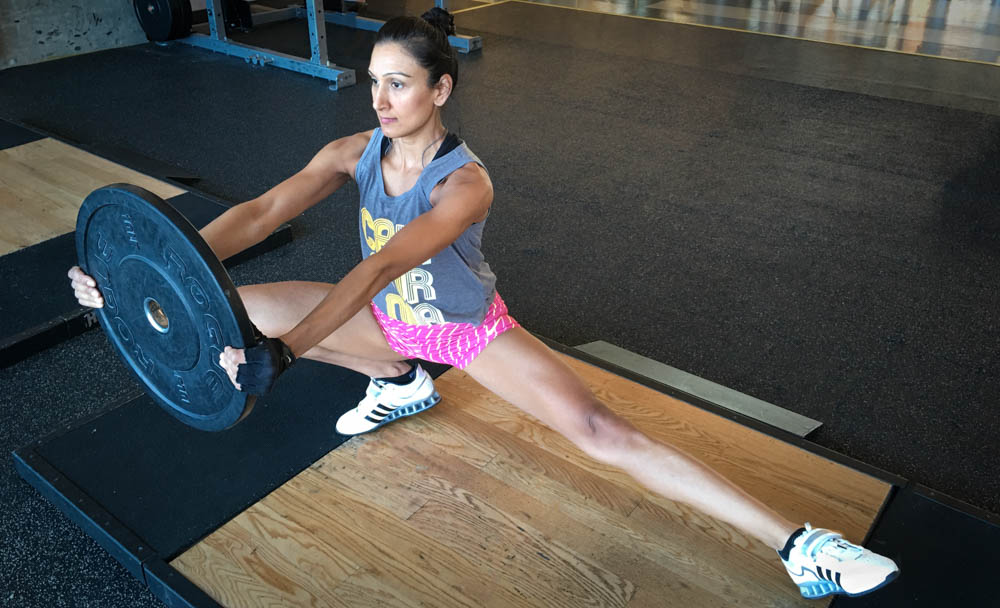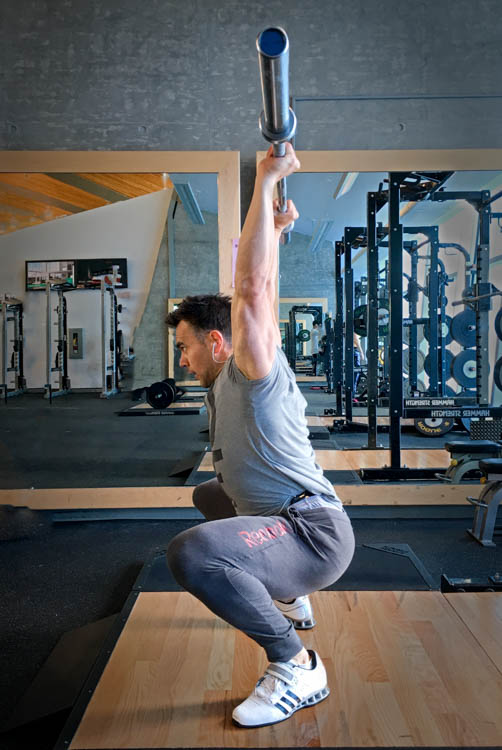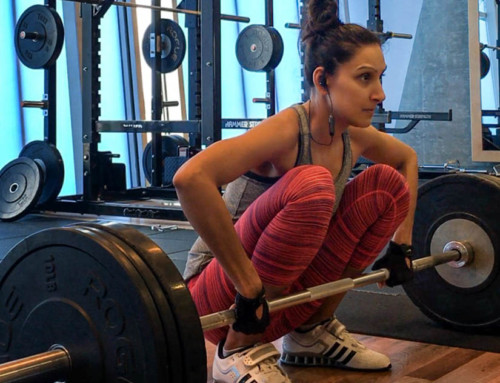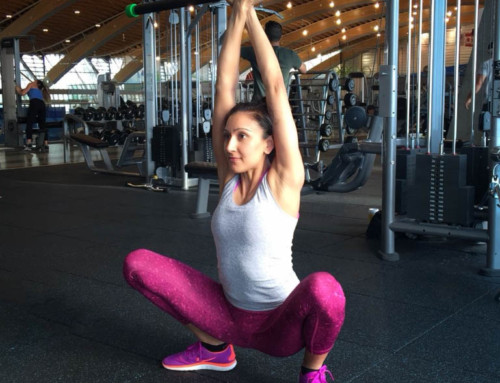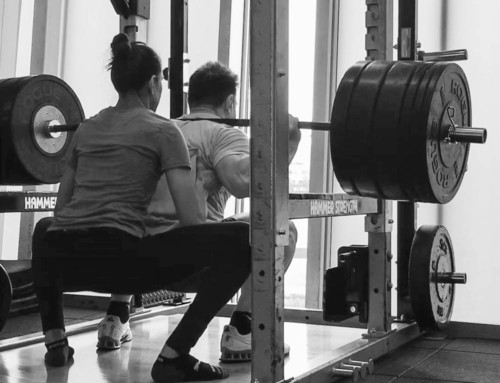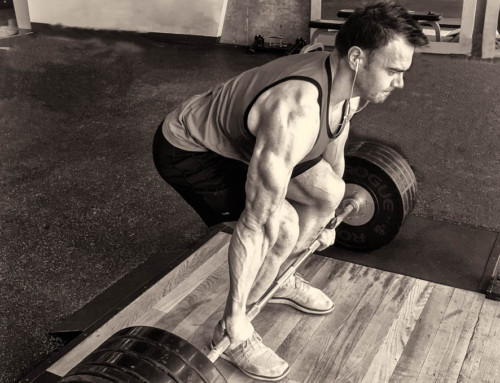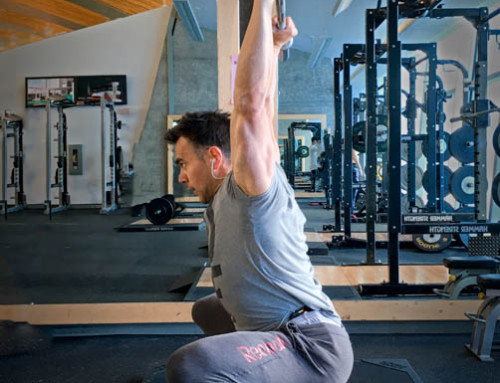Many of us understand the importance of warming-up prior to beginning a training session or any other physical activity. And, a large component of any warm-up includes Stretching. Often warm-up and stretching are used interchangeably and though these terms overlap, each differs from another in several factors, especially when it comes to function and program design.
Warm-ups used to prepare for training, in order to improve performance while limiting risk of injury. Some of this preparation includes stretching, dynamic movements or actual exercises but with lighter loads. Stretching focuses on increasing flexibility which essentially directly relates to range of motion (ROM).
In this article, we’ll take a look at the key differences between warm-up and stretching and discuss them in greater detail.
Warm-Up
Warm-Up has become an important part of overall training component. In order to perform better, produce more force and burn more calories, we need to engage neuromuscular system. This simply means using Central Nervous System (CNS) to recruit and continuously activate more muscle tissue.
A good warm-up is generally not too long and prepares your body and mind for main exercise, or which ever physical activity lies ahead. The body’s physiological systems responds by raising muscle and body core temperatures, increasing neural drive and range of motion (ROM). All these motions raise blood circulation and oxygen delivery to the working muscles.
Warm-ups have also been shown to improve post-activation potentiation (PAP)—a physiological phenomenon that generates stronger muscular contractions. PAP is an active research area and thus far has been linked to increases in muscular rate of force development (RFD)—commonly known as power. PAP is an interesting topic that will be discussed in later posts.
Warm-Up Components
Warm-up often consists of general and specific portions.
General warm-up is usually short 5-10 minutes of slow aerobic activity with general stretching (to replicate ROM of performed movements). Slow cardio such as jogging, skipping rope, rowing machine or cycling are all good options, engaging large muscles and body parts. The general stretches that follow should focus on specific ROMs that are required for the upcoming training session / physical activity.
Specific warm-up is just that—using moments similar to training or physical activity you’re about to do.
Most warm-ups should be around 10-20 minutes and follow the RAMP (Raise, Activate and Mobilize and Potentiate) structure.
Raise – is the portion that elevates body temperature, heart rate, respiration rate, blood flow, and joint fluid viscosity. This phase attempts to stimulate movement patterns that will be used in the upcoming training session.
Activate and Mobilize – continues the warm-up by performing specific ROM that will directly improve specific movements. This is where you begin to practice training movements with little resistance, such as bodyweight squats—in order to activate more motor units (MUs) and obtain overall greater muscle pattern coordination. These movements are often referred to as dynamic stretching. Dynamic stretching continues to increase body temperature while engaging the body in multi-planar movements—similar to the ones required in focused sport / physical activity.
Potentiation (increase effect) – specifying the warm-up even further by focusing on exact training movements while gradually raising the intensity of activity. This portion is sport / training specific warm-up where intensity level gradually increases. These are often seen in the warm-up sets of specific exercise, prior to initiating “working sets”. Potentiation phase is important for training and making improvements in power, speed and strength development.
Stretching and Flexibility
Flexibility is defined as a measure of ROM that has static and dynamic components. ROM is a degree of movement that occurs at the joint. Flexibility is a skill that allows you to perform better, regardless of type of movement and training. This ability also has a static and a dynamic component. Static flexibility has no voluntary muscular action, as the stretch is predominantly provided through the external force, such as gravity, partner, or machine. Dynamic flexibility involves actual movements (voluntary muscular action) through certain ROM. Because muscles move trough the biomechanical movement pattern, ROM from dynamic stretching is generally greater than the static ROM.
Flexibility should assist with activity of choice, but it is not a be-all-end-all of abilities. The most flexible person is not always most athletic, in terms of strength, power and/or muscular endurance. It’s good to be flexible, but obtaining specific joint angle is of little use, if you’re unable to produce force (muscular action) in that position. This means, the body needs to be progressively trained under load through greater ROM. By systematically applying physical stress, the body creates necessary neural and muscular patterns of the specific movement.
Flexibility is a diminishing skill and decreases with little to no practice. Muscle, connective tissues, joint capsules and skin, all affect ROM and flexibility through elasticity (ability to return to original resting length after passive stretch), and plasticity (tendency to assume new and greater length after passive stretch). Elderly population often suffers from condition called Fibrosis – where the body compensates the loss of muscle mass by increasing its connective tissues. This often occurs in elders who are not active or do not practice movements and their ROMs.
More muscle also decreases ROM (and thus flexibility) by impeding joint movement. This is common with strength and power athletes. In order to maintain flexibility, this ability needs to be consistently practiced. One way is to perform stretching methods on regular basis, which have been shown to increase flexibility around all body joints. Effects of stretching are acute (temporary) lasting from 3 min to 24 hrs. Static stretches holding position 15-30 secs is generally recommended. The stretch should be slow and constant, and never pushing beyond which may compromise joint integrity.
To improve flexibility, add some stretches not only in your warm-up but also to cool-down portion of the training session. Studies have shown that stretching within 5-10 minutes after a training session improves this ability as well as overall recovery. This is because the body is still warm (higher body temperature) which helps to improve elasticity of collagen fibers found within muscles and tendons, resulting in greater stretch and ROM.
Stretch Mechanism
We have a sense of our own body without having to see ourselves. This is called proprioception. The body continuously orients itself, performing various physical actions, without actually thinking or seeing them. Many different sensors called proprioceptors which send messages to the CNS (brain and spinal cord) allow us to do this. Stretching is another muscular action which is also performed with the help of two of such proprioceptors—muscle spindle and golgi tendon organ (GTO). Muscle spindles and golgi tendon organs (GTOs) are not the only proprioceptors involved during stretching, but are the two important ones.
Muscle spindles are located inside the muscle itself (intrafusal muscle fibers) which activate when the muscle that they are residing in changes length (elongates). When tension is applied, the muscle spindles within it send a message via sensory neuron into the spine (CNS), causing an activation of that muscle (extrafusal muscle fibers). This is referred to as the stretch reflex. Activated muscle is not ideal during stretching as it has less elasticity and therefore able to stretch less. If muscle spindles are not stimulated, muscle stays relaxed and able to stretch further. Slow static stretching does not activate stretch reflex. Rapid (ballistic and dynamic) stretching may stimulate muscle spindles, causing stretch reflex.
Golgi tendon organ (GTO), is located near musculotendinous junction (tendon), and when activated, during muscle tension (in this case, muscular elongation) sends a message to CNS, which in terms deactivates that particular muscle. This causes the muscle to reflexively relax and is called autogenic inhibition. Autogenic inhibition is the relaxation of the muscle that is being stretched (relaxation of the agonist). Increased tension within the muscle stimulates GTO, causing reflexive relaxation. Relaxation of the muscle that is opposite of the one being stretched (relaxation of the antagonist) is called reciprocal inhibition. Both autogenic and reciprocal inhibitions become important in creating a greater stretch of overall body area, and not just the muscles which are directly being stretched.
Types of Stretches
Static Stretch: slow and constant position held 15-30 secs. Does not engage stretch reflex keeping the muscle relaxed throughout the process. After holding position for 15-30 secs, slowly return back to standard/starting position.
Ballistic Stretch: active muscle actions, using bouncing-type movements. Ballistic stretches are often used in pre-exercise warm-up. Because of rapid motions, the muscle spindles usually activate triggering stretch reflex, thus activating muscles. Ballistic and dynamic stretches are distinct, as ballistic version involved a sudden and rapid style movements. Research shows that ballistic stretching is just as effective as static stretching in enhancing ROM, but are usually reserved for more experienced lifters.
Dynamic Stretch: functionally based movements that prepare the body for training or activity. Dynamic stretching is sometimes referred to as “mobility drills”—focusing on movement patterns of specific activity rather than individual muscles. The basis for dynamic stretches is to actively move selected joints through desired ROM by using 5-10 repetitions; progressively increasing ROM with each rep.
Proprioceptive Neuromuscular Facilitation (PNF) Stretch: these stretches are often done with a partner and are designed to relax muscles with increase of activity. The partner applies resistance by pushing against the stretched area. PNF Stretching achieves autogenic (agonist) and/or reciprocal (antagonist) muscle relaxation by using a series of 3 stretches of active and passive motions. Isometric muscle action is called a hold, and concentric muscle action is called a contract. Passive, static stretches are called a relax.
PNF stretching uses 3 basic types: (1) hold-relax; (2) contract-relax; (3) hold-relax with agonist contraction.
1. Hold-relax (PNF stretching): hold at passive pre-stretch for 10 sec with mild discomfort. The partner then applies force, instructing the athlete to “hold and don’t let me move the leg/arm, whatever is being stretched”. A person “holds” (isometric contraction) and resists in an isometric muscle action for 6 secs. A person then relaxes, and passive stretch is done and held for 30 secs. Final stretch should be greater due to autogenic inhibition (in hamstring stretch—the activation of the hamstrings).
2. Contract-relax (PNF stretching): also begins with passive pre-stretch for 10 secs of mild discomfort. A person then extends muscle (hamstring) against partner’s resistance concentrically through its ROM (concentric action of target muscle). A person then relaxes and passive hip flexion stretch is applied for 30 secs. Again ROM increases due to autogenic inhibition (activation of stretched muscle). Difference here is the active contraction, pushing against partner resisting it, but the rest is the same as “hold-relax”.
3. Hold-relax w/ agonist contraction (PNF stretching): is identical to “hold-relax” in first 2 phases. During third phase, concentrically contract agonist—adding more stretch force to passively stretch the antagonist (in hamstring stretch, following passive stretch (isometric hold), flex the hip, thus moving further into new ROM). Final stretch is greater b/c of reciprocal inhibition (ie: activation of hip flexors), and autogenic inhibition (ie: activation of the hamstrings).
Common PNF stretching for Quads and hip flexors; shoulders, hamstrings and hip extensors; groin; chest, calves and ankles.
Final Thoughts
Warm-up and Stretching has become an important part of fitness performance. Warm-ups often have a general portion of 5-10 mins cardio session followed by more specific movements that designed to improve ROM and prepare muscles for training session. Measuring your ROM is often associated with flexibility, which also has a static and dynamic component. Stretching is an effective method to improve flexibility and thus ROM.
Several varieties of stretching techniques exist in order to elongate muscles, or activate them. Static stretching does not engage stretch reflex and is an optimal way to lengthen muscles, improve ROM and increase recovery. Ballistic and dynamic stretches are both active movements, with one having a bouncing style versus the more functional controlled movement. Both active movements are performed in series of repetitions with each one steadily increasing ROM.
The last stretch style is referred as PNF, that has three specific techniques. Each PNF stretch is designed to improve ROM by relaxing either the muscle that is being stretched or the one opposing it.
—
We hoped you enjoyed this article, if so, please share it on your favourite social media so, we can get on google’s radar. Fell free to leave us a comment and start a discussion on the topic.
If you are looking to build strong, lean and beautiful shoulders be sure to check out our training books:

